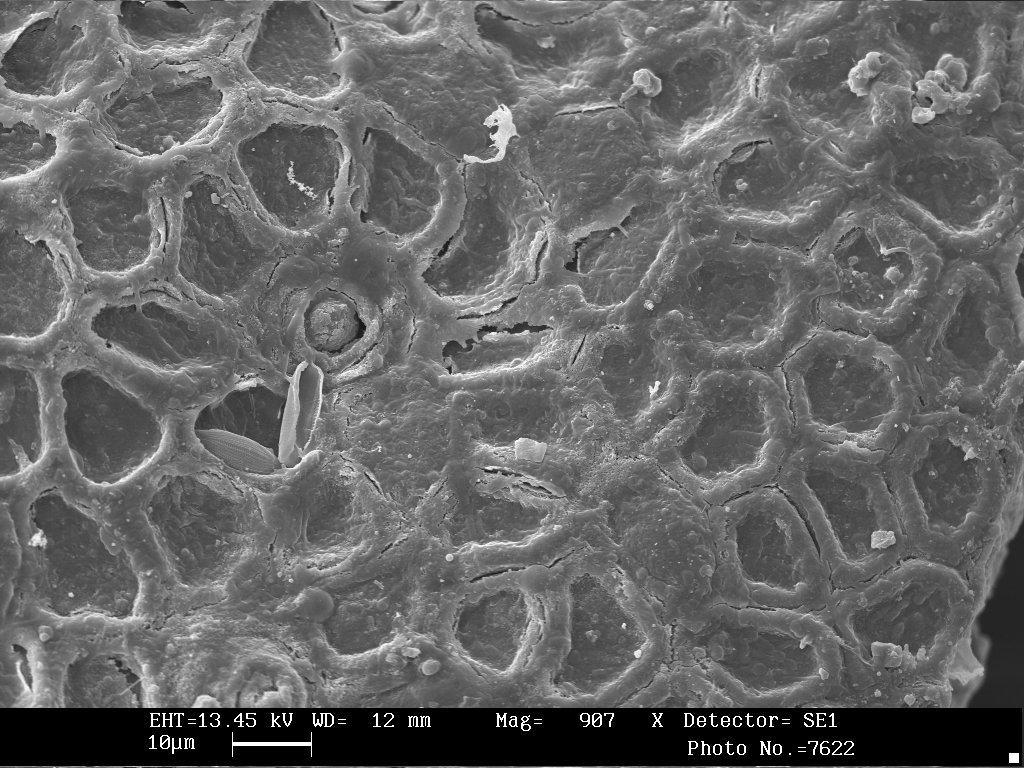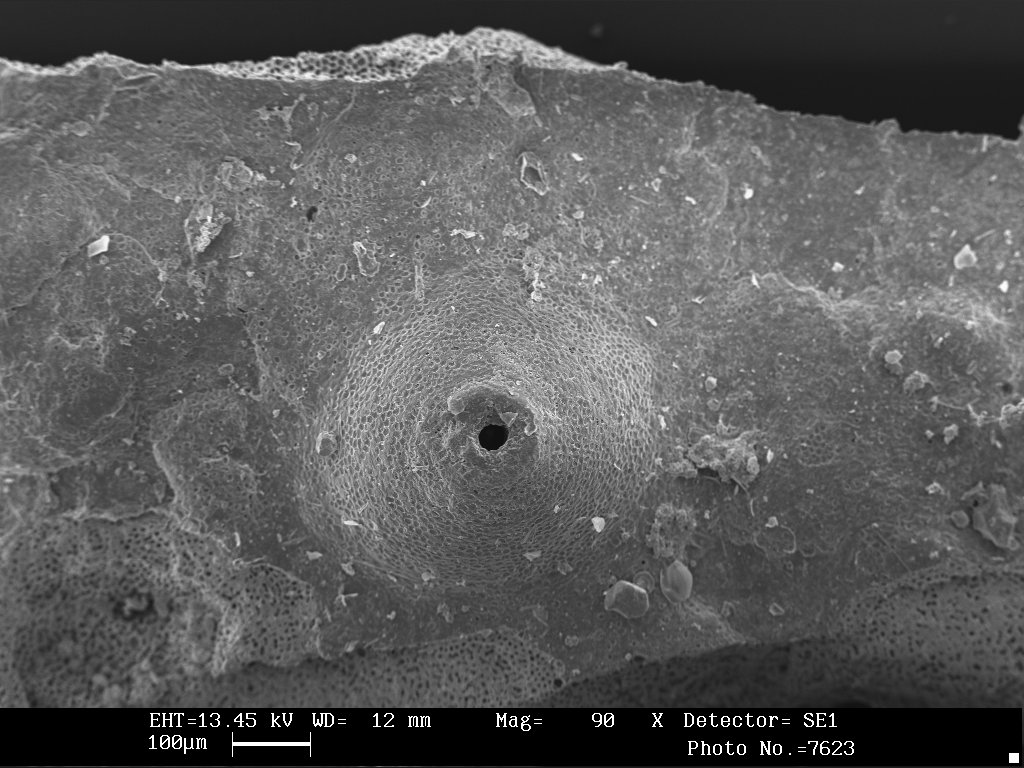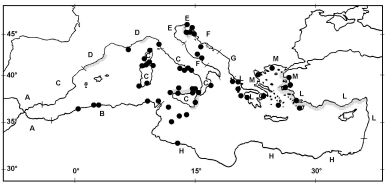BACK
VEGETATIVE FEATURES
REPRODUCTIVE FEATURES
ECOLOGY
PHOTO GALLERY  |
|
| MELOBESIOIDEAE | 34_PHM_LNR PHYMATOLITHON |
| Phymatolithon
lenormandii (Areschoug) Adey (1966) p. 325. |
|
 |
|
|
Synonyms: (basyonim) Melobesia lenormandi Areschoug (1852) d’après J. AG. Sp. Algarum, p. 514; Lithophyllum lenormandi Rosanoff (1866) p. 85; Lithothamnium lenormandi (Areschoug) Foslie (1895) p. 178; Lithothamnium lenormandi f. sublaeve Foslie (1895) p. 179; Lithothamnium squamulosum Foslie (1895) p. 155; Squamolithon lenormandi Heydrich (1911) p. 31. |
|
|
Thallus habit: encrusting, adherent; thalli often confluent and/or overlapping with irregular outline. Margin finely striped; edge irregular, white with little lobes (A). Size: maximum diameter 1.5cm (per single thallus), thickness 0.05-0.2mm. Colour of living specimen: dull violet, (rarely blue) white rimmed (also brown, mauve-grey, pink or red). Colour of dried specimen: from violet to grey.
Multistratose, multilayered thallus. Medulla: rectangular cells, in 7-8 horizontal rows, compact, regularly overlapping: l0-22 (30)µm long x 3-6 (8)µm in diameter. Cortex: ovoid-rectangular cells in compact rows: 4-6 (10)µm long x 3-6 (9)µm in diameter. Epithallial cells: domed (B). Cell connections: cell fusions. |
 A A
 B B
|
REPRODUCTIVE FEATURES 
Gametangial conceptacles: spermatangial conical (C) or more or less flattened, outer diameter up to 400µm, inner diameter 136-210µm x 65-78 (122)µm high; carpogonial like spermatangial ones. Tetra/bisporangial conceptacles: multiporate (from 6 to 60 pores), hemispherical, not much prominent, numerous, grouped often becoming confluent; outer diameter 250-400µm; more or less elliptical chambers, inner diameter 130-221µm x 70-130µm high. After senescence, conceptacles lose roofs leaving large craters. Phenology: all year. |
 C C
|
ECOLOGICAL FEATURES


Habitat: epilithic, sciaphilous species. Bathymetric distribution: littoral to sublittoral up to 55m deep. In poorly illuminated environments (caves, ravines…) and enough damping. It may live up to the littoral zone (about 2m above sea level). Geographic distribution (Babbini & Bressan 1997): Western Mediterranean Sea (African shores) (B): Algeria, Tunisia; Middle Western Mediterranean Sea (C): Spain, France, Italy; North Western Mediterranean Sea (D): Spain, France, Italy; North Adriatic Sea (E): Italy, Slovenia, Croatia; Middle Adriatic Sea (F): Italy, Croatia; South Eastern Mediterranean Sea (H): Italy, Malta, Libya; Middle Eastern Mediterranean Sea (L): Greece, Turkey, Syria; North Eastern Mediterranean Sea (M): Greece, Turkey. www.AlgaeBase.org Phymatolithon lenormandii (Areschoug) Adey |
|